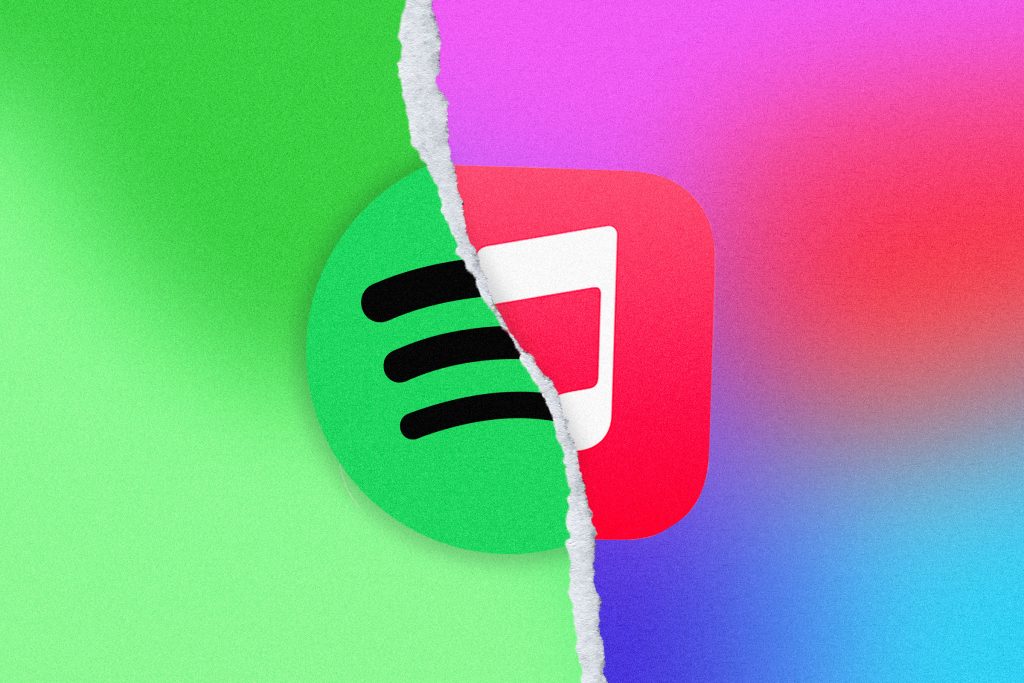
It’s a long-running debate amongst audiophiles and casual listeners alike: Apple Music versus Spotify. The two titans of the music streaming industry both have dedicated user bases and a list of features and benefits to rally their allegiances.
These aren’t the only two streaming services, but they’re definitely the biggest. According to the most recent metrics, Spotify has 433 million users total, with 188 of them being paid subscribers. Apple Music has 88 million subscribers.
Spotify was founded on April 23, 2006, in Stockholm, Sweden by Daniel Ek and Martin Lorentzon. The streaming service officially launched in 2008 via invite-only, offering only paid memberships. Free memberships weren’t introduced publicly until the following year, and only in the UK. In 2011, Spotify expanded to the U.S. with help from a $100 million investment. 12 years later, Spotify is now available in 180 different countries.
Apple Music’s history is a little different. Launched 7 years ago in 2015 by parent company and tech giant Apple, the streaming service was promoted as a streaming music service with a “worldwide live radio station from Apple.” This is different from Spotify, which focused solely on music streaming. In 2020, Apple announced the streaming platform was available in 167 countries.
Arguably one of the biggest selling points for either streaming service is its algorithm for finding new music recommendations. This is something Spotify is now very well-known for.
Chris Robley of DIYMusician explains the algorithm (or algorithms, more accurately) as such: it “analyzes the listening habit of hundreds of millions of users. It makes comparisons and connections using historical listening behavior and then predicts what individual listeners will want to hear in the future.”
Multiple complex algorithms are employed to create recommendations for users and these recommendations take the form of playlists. Spotify creates unique playlists of recommended songs designed for the user, created both daily and weekly.
Weekly playlists include Discover Weekly – a mix of songs based upon your individual tastes and behavior, and Release Radar – a similar playlist but honed specifically on new music releases. Additionally, users are given 6 Daily Mixes, unique playlists with liked songs and a couple of similar recommendations sprinkled in.
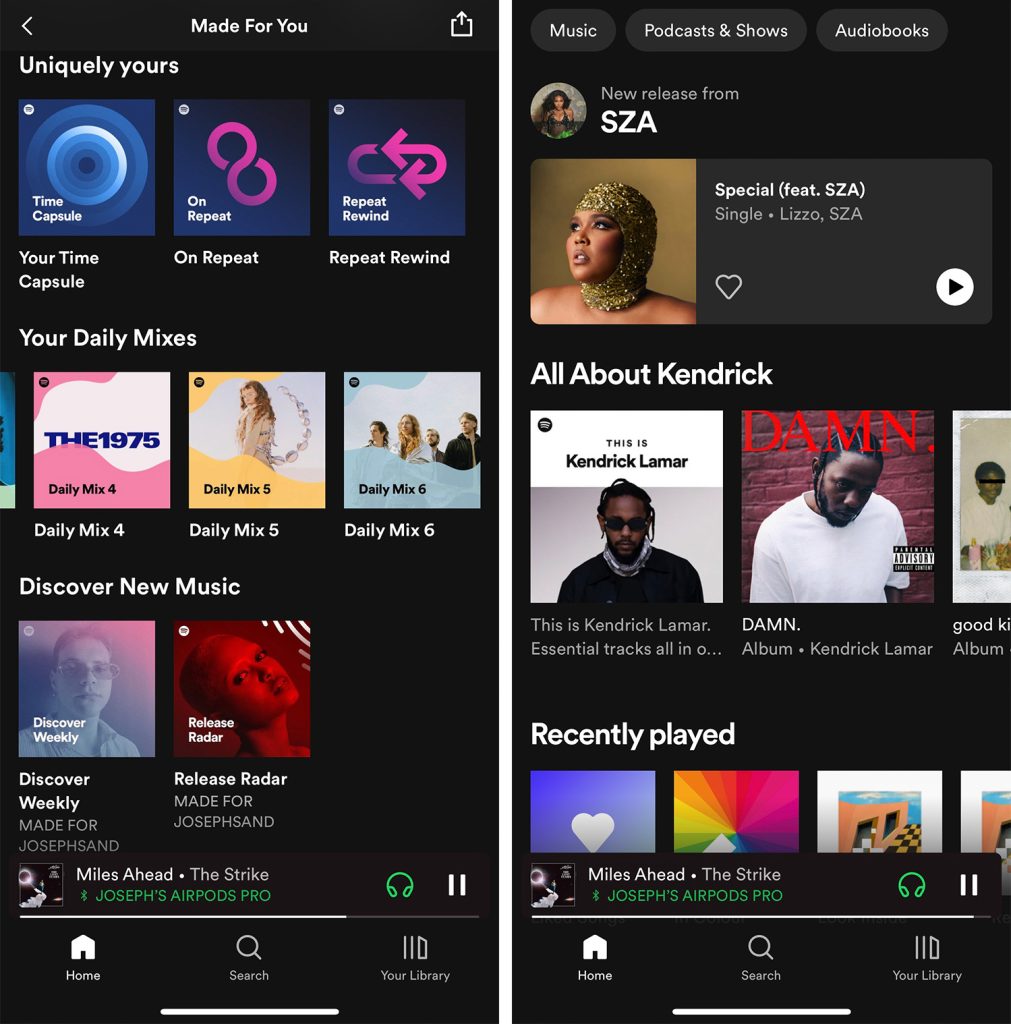
Apple Music takes a slightly different approach. While it does also create a “New Music Mix” for the user, containing songs from artists using an algorithm, the primary avenue for music recommendation is through albums and playlists.
On the Listen Now page, you’re greeted with a catalog of albums grouped in different categories, with playlists interspersed throughout. Genres and moods such as Pop, Alt-R&B, Chill and Workout each have a unique section with curated playlists and albums.
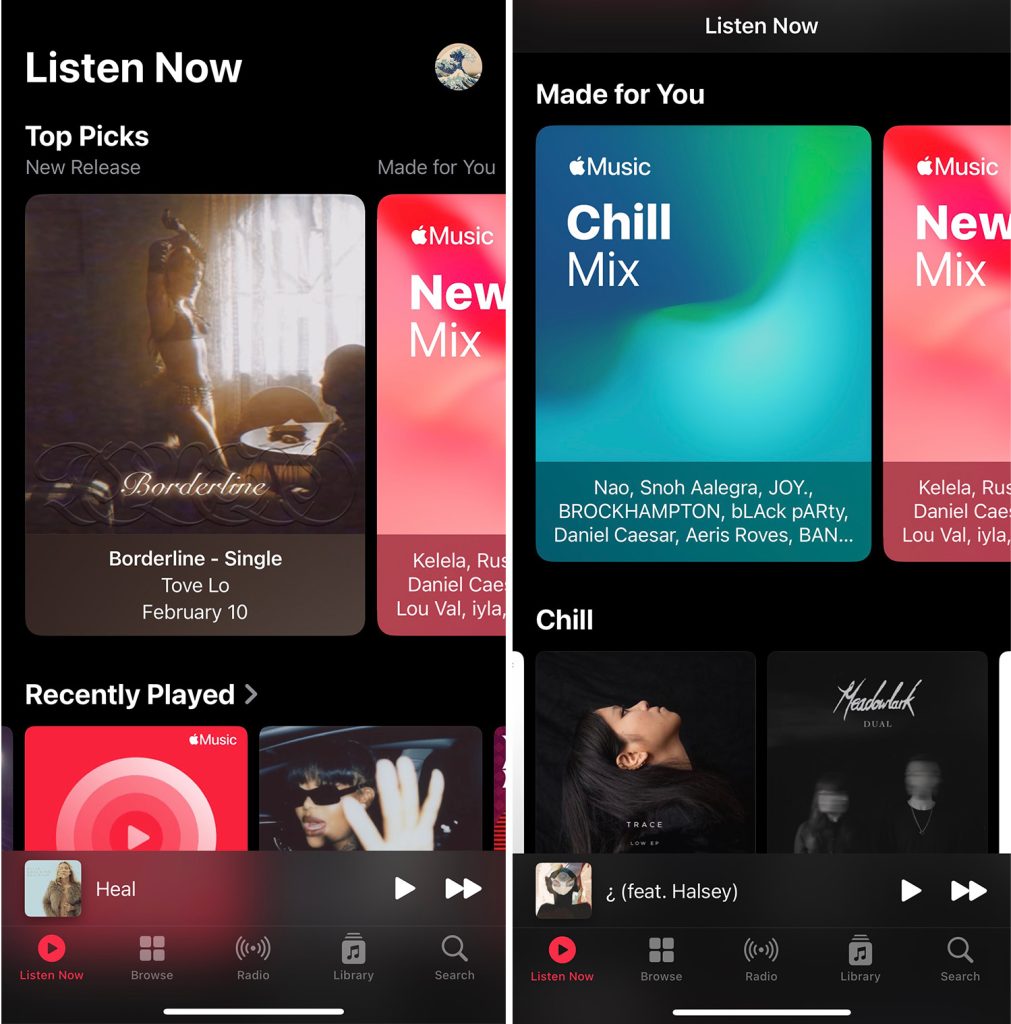
Music recommendation is just one side of the debate, though. Key features are another. Spotify has been very proactive in rolling out new and unique features for users.
One of their biggest successes with new features is the ever-popular Spotify Wrapped. Taking up thousands of minutes of Instagram stories year after year, Spotify Wrapped was introduced in 2017 and has since evolved into quite the social event.
Every December, Spotify releases metrics on users’ unique listening habits and history, detailing their top songs, genres, and artists, as well as the total number of minutes listened. Not only has this created a sort of competition amongst its own user base, but because Wrapped is so popular it functions as free advertising each year it’s released. Spotify users rush to social media to post and compare their stats with everyone else. Or to make Apple Music users feel bad.
it’s almost spotify wrapped season!! or as i like to call it, make apple music users feel left out season
— ˗ˏˋ ryn ˎˊ˗ (@onlineryn) November 27, 2020
Understandably, this created quite an amount of FOMO amongst the Apple Music crowd.
i wish apple music did something similar to spotify wrapped i feel left out
— t͏i͏ (@workurway) December 1, 2021
That is until Apple caught on and created its own version in 2019, titled Replay. It didn’t quite compare, though, until recently, when Apple gave it a major update. Now both services have their own year in review.
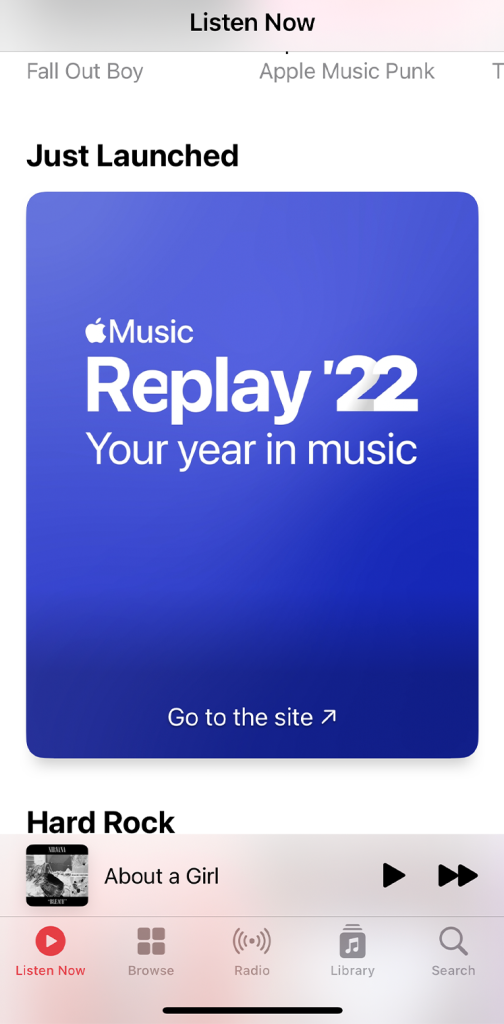
Another important feature of both services is lyrics. This time around, Apple Music got the jump.
With the release of Apple’s iOS 12 in 2018, users were able to search for songs using lyrics, an incredibly helpful feature. Apple Music went a step further just a year later with iOS 13, introducing real-time lyrics for songs.
Spotify lagged behind in this regard until 2020, when lyric-searching was introduced. Furthermore, synced lyrics weren’t implemented until a year later, in 2021.
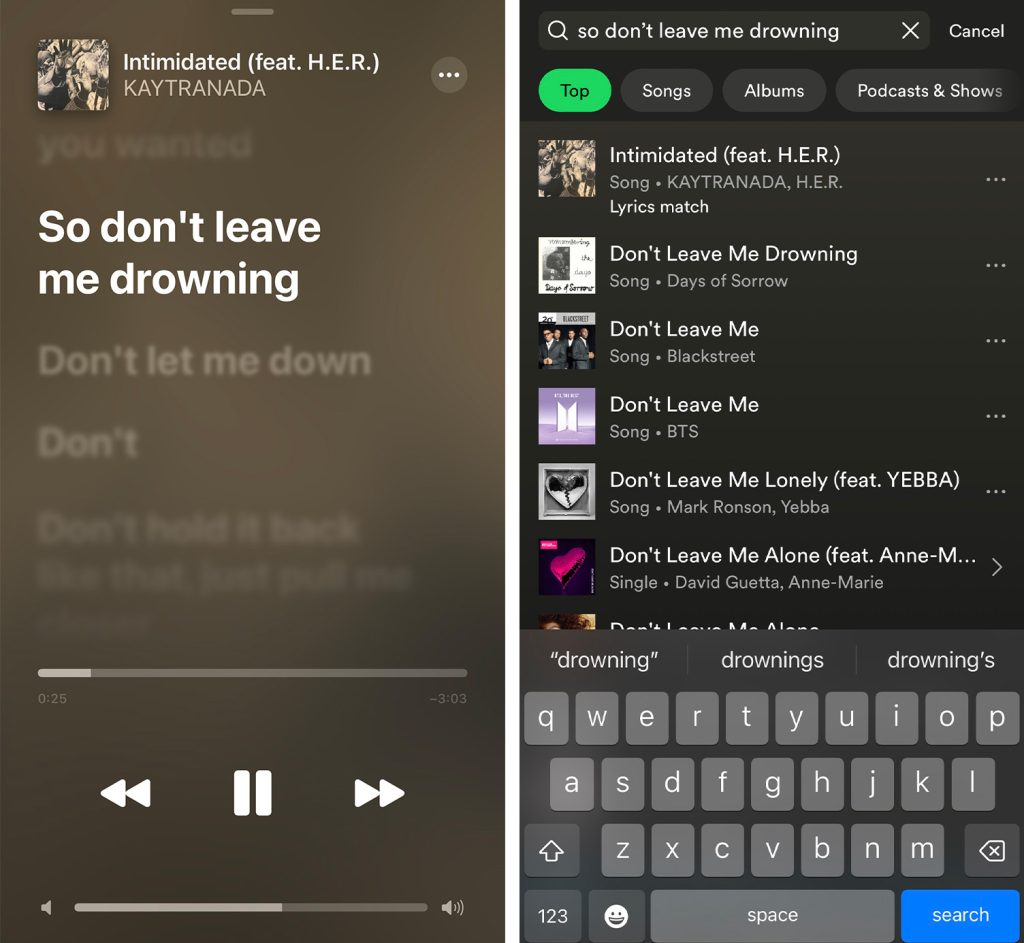
These are not the only features unique to each streaming service by far. Other considerations require more discussion, however. When deciding on a streaming platform, there are two factors that often overshadow all others: library and sound quality.
In terms of music library, the platforms are equal, both reporting 100 million songs. However, over the years Spotify has grown to include more than just music. It now has five million podcasts, as well as a selection of over 300,000 audiobooks.
Conversely, Apple Music is owned by Apple, which has services unique to these other additions Spotify now has: Apple Podcasts and Apple Books.
Sound quality is another key consideration. On this front, Apple Music takes the crown. Offering lossless audio for all 100 million of their songs, Apple Music has made serious strides in offering high-quality audio for its users. In addition, it has spatial audio powered by Dolby Atmos technology, which allows for a surround-sound listening experience.
Spotify promised lossless audio in February of 2021, yet the feature is still completely missing from the platform.
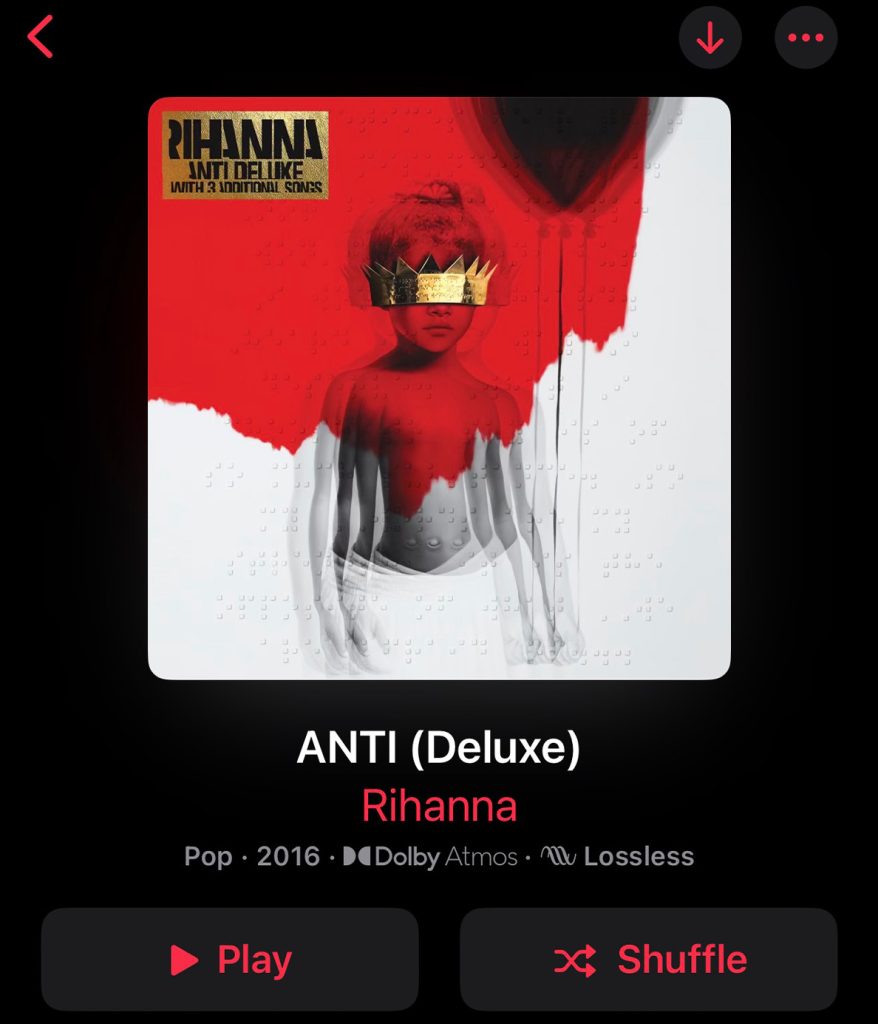
Ultimately, the decision to take the side of a streaming service is a personal one. Each service has its own benefits and downsides, but it boils down to what a user wants in their music listening experience.
The general consensus is this: audiophiles wanting the best possible audio quality that don’t care as much about discovering new music will probably be happiest with Apple Music. On the other hand, a more casual listener interested in discovering new music and using unique features will be happiest with Spotify.
Apple music definitely wins when it comes to sound quality with features such as lossless, dolby atmos and spatial audio
— Koech (@aboutkoech) February 6, 2023
Spotify on the other hand wins in terms of listening algorithms and UX for the listeners. https://t.co/UxzSOucozo






















